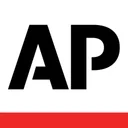Trump and Student Loans: What’s Happening With Forgiveness, FAFSA and More
The new FAFSA is open — the federal government is not. Here's how the latest news affects current and future borrowers.
Many, or all, of the products featured on this page are from our advertising partners who compensate us when you take certain actions on our website or click to take an action on their website. However, this does not influence our evaluations. Our opinions are our own. Here is a list of our partners and here's how we make money.
Let's break down the latest news that affects student loan borrowers.
Student loan forgiveness resumes for IBR borrowers
Qualifying borrowers on the federal Income-Based Repayment (IBR) plan are back on track to have their remaining balances canceled.
Good news, right?
It’s progress — and a long time coming. These borrowers have completed the required 20 or 25 years of payments to receive forgiveness under IBR, which is a specific type of income-driven repayment plan.
This forgiveness wasn’t necessarily a given — it was suspended in July amid legal challenges. But reports from The Washington Post and CNBC in early October confirm that the Education Department has notified eligible borrowers that their discharges will be processed soon.
These borrowers have until Oct. 21 to opt out of the forgiveness program; after that date, the DOE says forgiveness will be processed within two weeks for most borrowers.
OK, but …
Not much about federal student loans is simple these days, so this news comes with some uncertainty. One big question: How will forgiveness affect borrowers’ taxes?
Forgiven student loan balances are currently exempt from federal income tax, thanks to the Covid-era American Rescue Plan. But that exemption ends Dec. 31 — after that, forgiven balances will be subject to federal taxes.
So what if stalled processing at a short-staffed Education Department means that these borrowers’ debts aren’t actually canceled until 2026? Well, many are concerned that the forgiven balance would be added to borrowers’ 2026 income tax and trigger a hefty bill.
To learn more, see the NerdWallet article on student loan forgiveness “tax bombs.”
The federal government shuts down
On Oct. 1, the government shut down after Congress failed to pass a continuing resolution to keep federal agencies running.
How does this affect student loan payments?
It doesn’t. Payments are still due to your servicer during a shutdown.
Can I still submit the FAFSA?
Yes, you can and should still submit the Free Application for Federal Student Aid (FAFSA). These applications for federal financial aid will still be processed during the shutdown.
Remember, you have until June 30, 2026 to submit the FAFSA for the 2025-2026 school year. And you have until June 30, 2027 to submit the FAFSA for the 2026-2027 school year. Sooner is always better.
Learn more about how the shutdown will affect you.
FAFSA opens for the 2026-2027 academic year
The FAFSA for the 2026-2027 academic year is now open, as of Sept. 24. Students and their parents must fill out this form to be considered for federal, state and school-based aid, as well as federal student loans.
How do I get started?
Your first step to complete and submit the FAFSA is to head to studentaid.gov. Before getting started, gather parents’ and students’ Social Security numbers, 2024 tax returns and bank statements, among other documents. (See this FAFSA checklist.)
Set aside about 30 minutes to complete the form. A new development for this year’s form: You can invite contributors with their email address, rather than having them create their own FSA ID.
Remember that you must fill out the FAFSA every year to qualify for aid and loans.
What’s my deadline?
For the 2026-2027 school year, the federal deadline is June 30, 2027. But — and this is significant — submit it as soon as you can. Individual states and schools may set their own deadlines earlier.
Also, some aid is given on a first-come first-serve basis, so applying early gives you the best chance of claiming that free money. See more about FAFSA deadlines.
Note that there’s still time to submit the FAFSA for the current 2025-2026 school year. You have until June 30, 2026, but if you haven't done it yet, prioritize it now.
The “one big, beautiful bill” impacts borrowers
On July 4, President Donald Trump’s “one big, beautiful bill” was signed into law. It will majorly affect many consumers’ finances — including their student loans.
How big of a deal is this?
Big. Current and future borrowers could be affected in many ways.
Federal PLUS loans for graduate and professional students will go away. Parent PLUS loans will be capped. Most income-driven repayment plans will no longer be available. Debt relief options will become more limited. Loan forgiveness will be harder to achieve. And more.
That’s a lot — what happens next?
The good news is that none of these changes are happening right now. Most will go into effect sometime between July 1, 2026 and July 1, 2028.
This NerdWallet article gets into the details of the timing, impact and next steps for each upcoming change.













